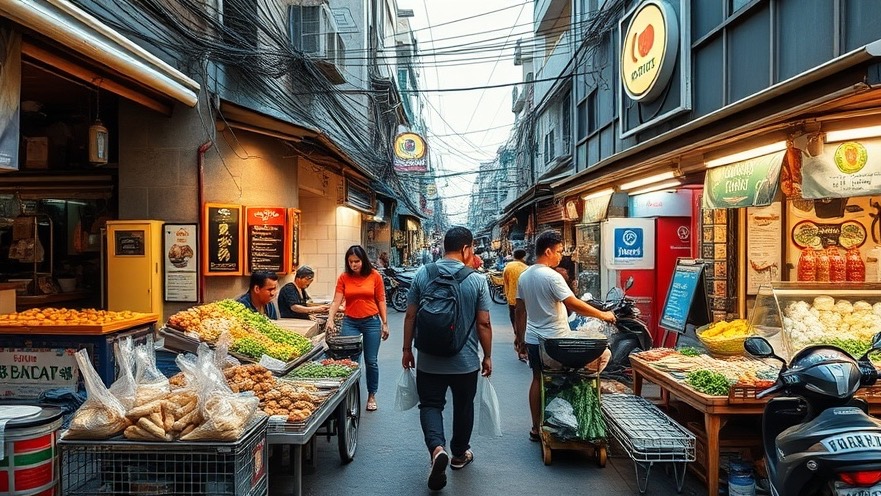
In Thailand, street food is more than just a meal—it’s a cultural experience. It’s found on every corner, in smoky stalls, roadside carts, and bustling night markets. Whether you’re in Bangkok, Chiang Mai, or a coastal town like Hua Hin, the scent of sizzling garlic, lemongrass, and chili will lead you to something unforgettable.
Must-Try Thai Street Food Dishes
Pad Thai
Thailand’s signature noodle dish is a harmonious blend of flavors—sweet, sour, salty, and savory. Stir-fried rice noodles are tossed with egg, tofu or shrimp, bean sprouts, tamarind sauce, and crushed peanuts. Often cooked to order, it’s a quick, satisfying meal any time of day.
Price range: 40–70 THB
Som Tum (Papaya Salad)
A spicy green papaya salad made fresh in a mortar and pestle. Ingredients include shredded unripe papaya, lime, fish sauce, chili, garlic, and peanuts. The result is a bold, refreshing dish that wakes up your palate.
Price range: 30–60 THB
Moo Ping (Grilled Pork Skewers)
Tender slices of marinated pork grilled over charcoal and served with sticky rice. It's smoky, sweet, and savory—perfect for breakfast or a quick snack on the go.
Price range: 10–20 THB per skewer
Khao Niew Mamuang (Mango Sticky Rice)
A beloved Thai dessert featuring ripe mango paired with glutinous rice and drizzled with coconut cream. It's soft, fragrant, and just the right amount of sweet.
Price range: 50–80 THB
Gai Tod (Fried Chicken)
Thai-style fried chicken is all about crispy skin and juicy meat. Often served with spicy dipping sauces, it's a favorite in both street stalls and local markets.
Price range: 30–60 THB per piece
Khanom Krok (Coconut-Rice Pancakes)
These mini coconut milk pancakes are slightly crisp on the outside and soft in the center. They're typically topped with scallions, sweet corn, or taro.
Price range: 20–30 THB per tray
Kuay Teow (Thai Noodle Soup)
A comforting bowl of noodle soup that you can customize with your choice of noodles, meat, broth, and condiments. Look for roadside stalls with bubbling pots and steaming bowls.
Price range: 40–60 THB
Where to Eat Street Food in Thailand
Bangkok
Head to Yaowarat (Chinatown), Victory Monument, and the Soi 38 Sukhumvit night market for some of the best street eats in the capital.
Chiang Mai
The Saturday and Sunday Night Markets are packed with food stalls. Try the local specialty, Khao Soi—crispy and soft egg noodles in a rich coconut curry.
Phuket
Check out Phuket Old Town’s Sunday Night Market or the stalls along Patong Beach Road for grilled seafood and southern Thai flavors.
Hua Hin
The Hua Hin Night Market offers fresh seafood, roti pancakes, and coconut ice cream under a relaxed, beach-town vibe.
Tips for Eating Street Food in Thailand
Look for busy stalls with a steady stream of locals. This usually means the food is good and freshly cooked.
Carry small bills and coins. Most vendors don’t accept cards.
Don't be afraid to ask for “mai phet” if you want your food less spicy.
Bring tissues or wet wipes—street stalls rarely provide napkins.
Street food in Thailand isn’t just cheap—it’s bursting with character. Each dish tells a story, shaped by tradition, regional flair, and the personal touch of the vendor behind the cart. So skip the tourist restaurants for a night, follow the delicious smells, and let your taste buds guide you. In Thailand, the best meals often come served in plastic bags or on paper plates—and they’re unforgettable.
 Add Row
Add Row  Add
Add 




Write A Comment